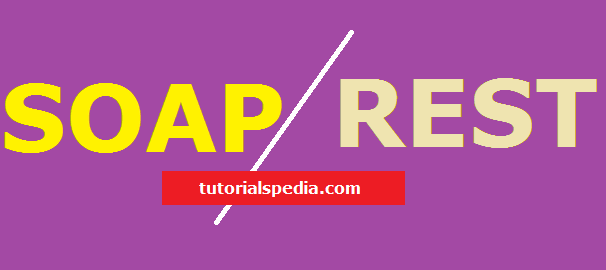Web Services are playing a key part in integrating different systems and applications and getting data transferred in an efficient and standardized manner to achieve various business goals. In the world of Integration, whenever there is a talk about web services, a decades old question gets repeated: SOAP Vs REST? What are the differences between SOAP and REST web services and what are the Pros & Cons of each type of web service?
In this post, we will discuss some of the major differences between RESTful and SOAP web services and explain what benefits are associated with SOAP or REST web services as a comparison.
Before we explain differences between REST and SOAP web services, let’s first have a brief walkthrough of the two web service types.
SOAP Web Services Introduction
SOAP (Simple Object Access Protocol) web services are in use since long and are still quite popular among the integration experts for exposing web service operations in order to integrate heterogeneous systems and applications.
SOAP web services are XML based web services where Web Service is described in an XML format document (known as WSDL) and all operation’s request & response messages are also based on XML standards.
I have uploaded a video on TutorialsPedia YouTube Channel, where I have explained in detail about SOAP Web Service Concepts for Beginners. This video should help you to further dig into the core concepts of SOAP web services.
RESTFul Web Services Introduction
REST (Representational State Transfer) is a set of architectural principles which uses HTTP transport protocol with a more flexible option to enable integration between systems & applications. REST web services support different methods (HTTP Verbs) like GET, POST, PUT, DELETE etc.
Those application programming interfaces that are backed by the architectural style of REST architectural system are called REST APIs.
REST APIs are much popular now-a-days due to various positive features associated with REST implementation including support for multiple data formats (XML, JSON, CSV etc.), a closer relationship to standard HTTP codes and URL standards, lower learning curve and less tooling dependency.
Now that we have shared some basic concepts of REST and SOAP, let’s now discuss the differences between SOAP and REST.
REST Vs SOAP: Difference Between SOAP Web Services & RESTful Web Services
While there are many differences and associated Pros & Cons of SOAP and REST, It is sometime a personal choice & sometimes a decision based on the requirements to choose between the two options for implementing Web Services & APIs. Both SOAP and REST are mature enough and both are popular in the market for long and we are observing evolution, improvements and standardization in both areas with time.
If you want to watch video on TutorialsPedia YouTube channel about SOAP and REST Web Services comparison, here is a video for you explaining REST and SOAP differences in detail.
In a nutshell, here is a comparison of SOAP Web Services & RESTful Web Services:
- SOAP is purely based on XML while REST Supports Multiple Data formats including XML, JSON, CSV etc.
- SOAP is a messaging Protocol while REST is an architecture style.
- SOAP is considered heavier while REST is comparatively lightweight.
- SOAP can use HTTP(s), JMS, SMTP etc while REST uses HTTP(s) as transport Protocol.
- SOAP has in-built validation mechanism while REST doesn’t have such an in-built validation.
- SOAP has a higher learning curve while REST is considered easier to learn and implement.
- SOAP has WS-Security support which makes it more secure and robust while REST security solely relies on transport level hashing and any added data-level encryptions.
Recommended Reading: SOAP Web Services Interview Questions and Answers
If you have any further questions or you have any further inputs on this topic, feel free to comment below.


Pingback: REST Vs SOAP Web Services | Comparison of SOAP & RESTful Web Services | SOAP & REST Differences – RICOS WEB SERVICES